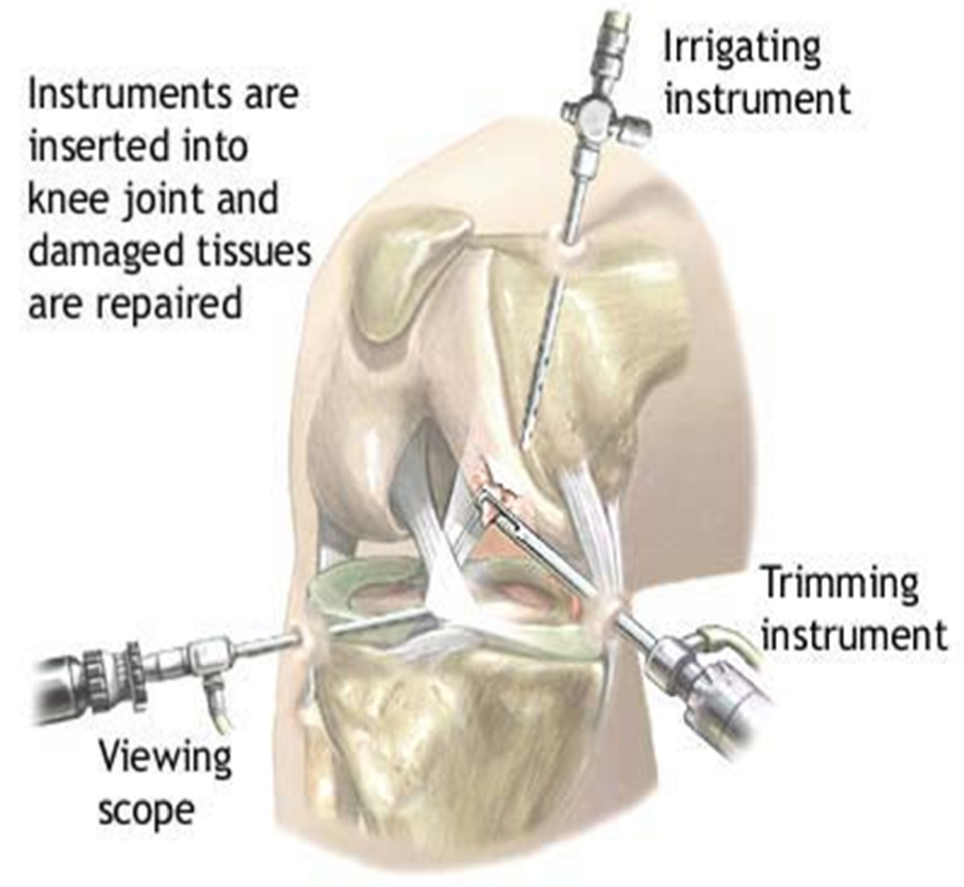Knee arthroscopy is one of the most common surgeries that Dr. Rubin performs. These include: meniscus tears, anterior cruciate ligament (ACL) tears, chondromalacia (cartilage defects), osteochondritis dissecans (OCD), and others. Dr. Rubin prefers knee arthroscopy for ACL tears because it allows for much smaller  incisions.
incisions.
There are several anesthesia options that are available and the anesthesiologist goes over these with the patient prior to entering the operating room. After the patient is brought into the room and positioned on the operating table, the anesthesiologist takes his time to administer appropriate anesthesia.
As soon as the patient is asleep or relaxed, Dr. Rubin examines both of the patient’s knees. He checks for possible ligament instability, evaluates the range of motion and watches for possible mechanical blocks that could sometimes be encountered.
After the patient is properly prepped and draped, Dr. Rubin makes two small incisions that are less than a half-inch in length. On a rare occasion a third incision is required. He inserts an arthroscope (an instrument used to visualize the interior of a joint cavity) through one of the portals (incisions) into the knee joint and thoroughly examines it by looking at the TV monitor. During arthroscopy multiple photos are taken with the scope, which Dr. Rubin uses to go over the procedure in detail with the patient during his or her first follow-up appointment.
Attention is then directed toward the main problem. If the meniscus or the smooth cartilage is torn, or if a ligament is injured, Dr. Rubin determines if it is repairable or if a portion of it needs to be removed. These techniques involve the use of different arthroscopic instruments like shavers, biters, graspers and others. These instruments are approximately the size of a pencil.
After the work is completed, the incisions are closed and sterile dressing is applied. Dr. Rubin often injects the knee with a local anesthetic to provide pain relief for the next 5-6 hours until the patient gets the appropriate pain medication. Usually a knee cryocuff is applied which keeps the knee cool for additional comfort and pain control. A knee immobilizer is fitted if postoperative stability is important.
Because knee arthroscopy is an outpatient procedure, the patient goes home the same day. A follow-up appointment in 1-2 weeks with Dr. Rubin is arranged by the hospital nurse, who also provides the home instructions and other important information for the patient.